
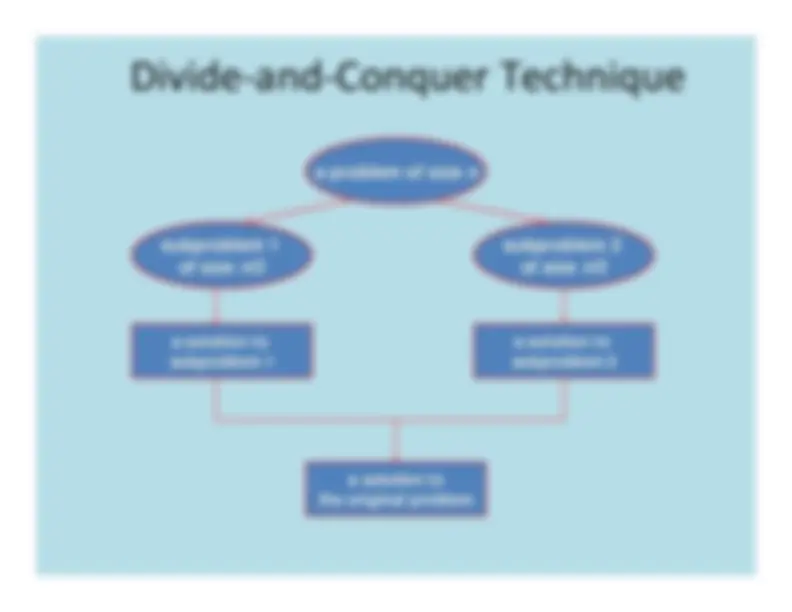
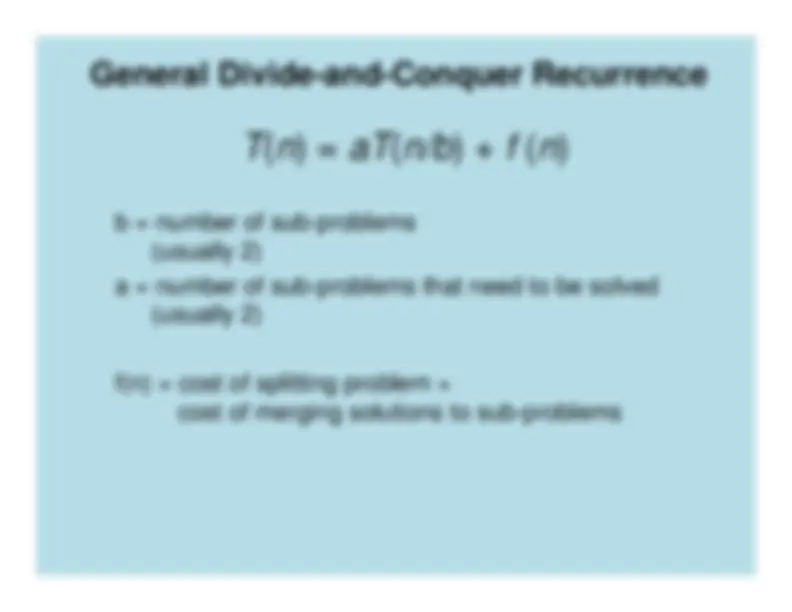
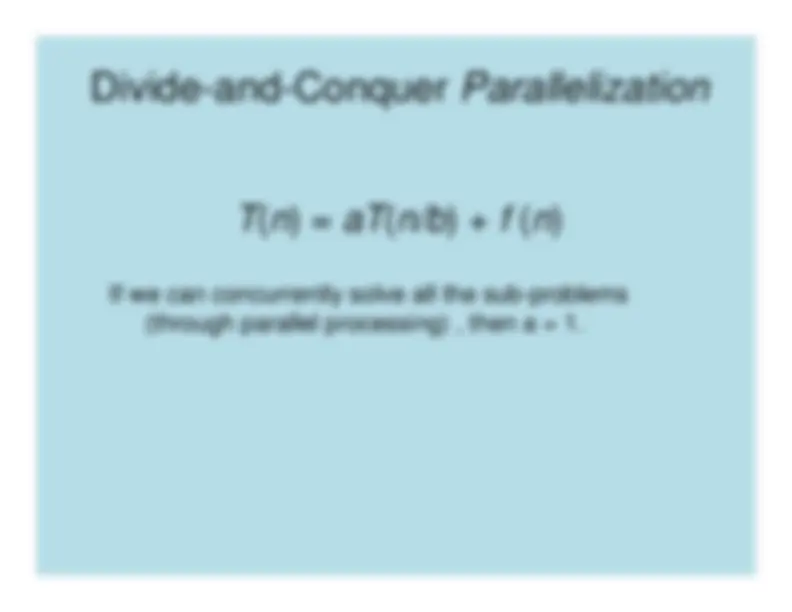
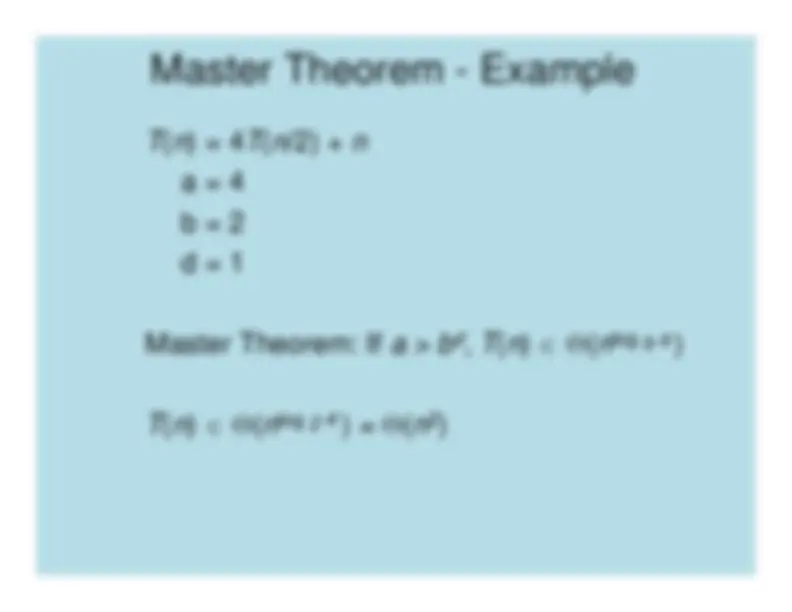
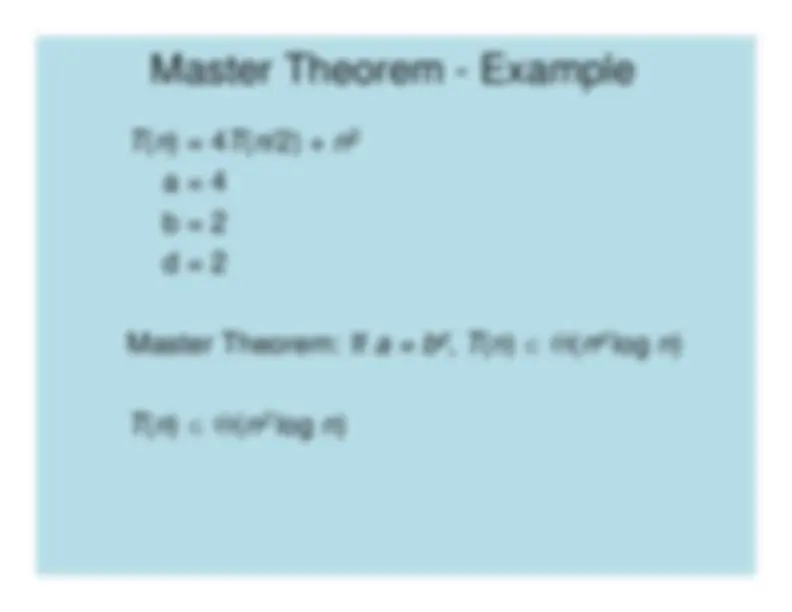
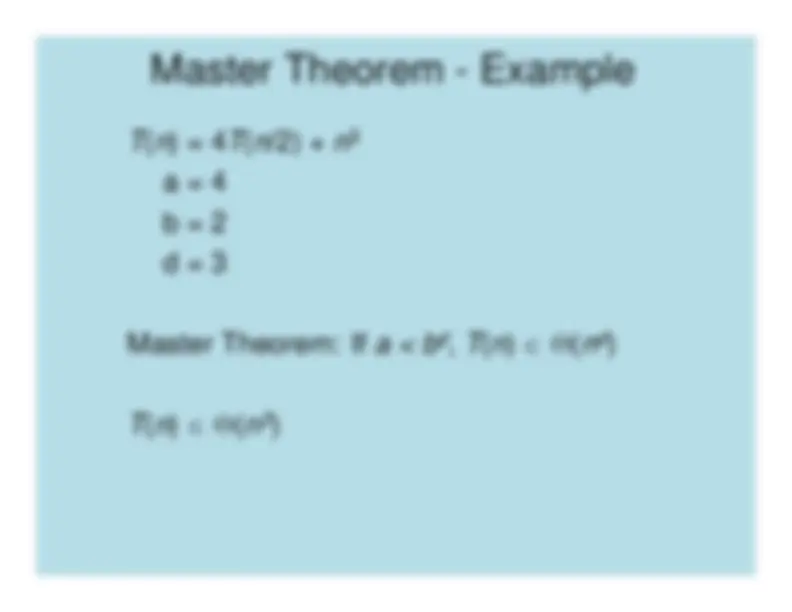
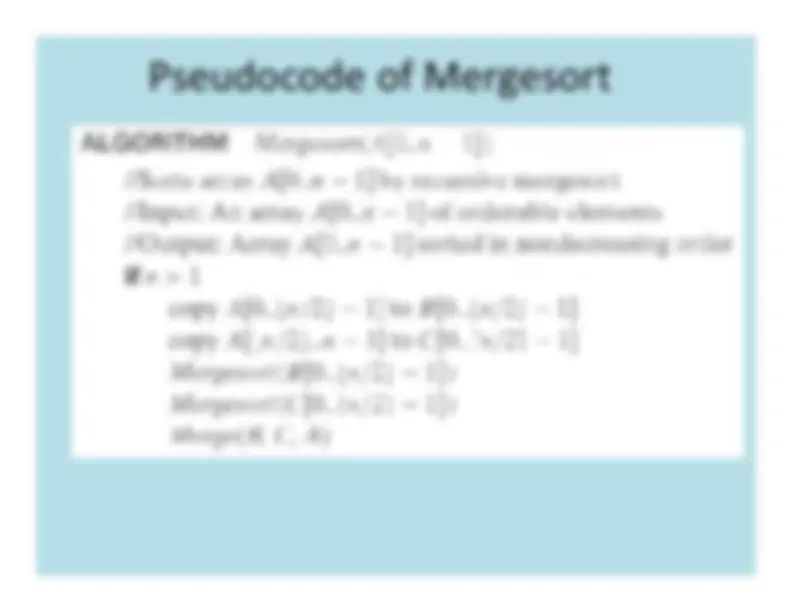
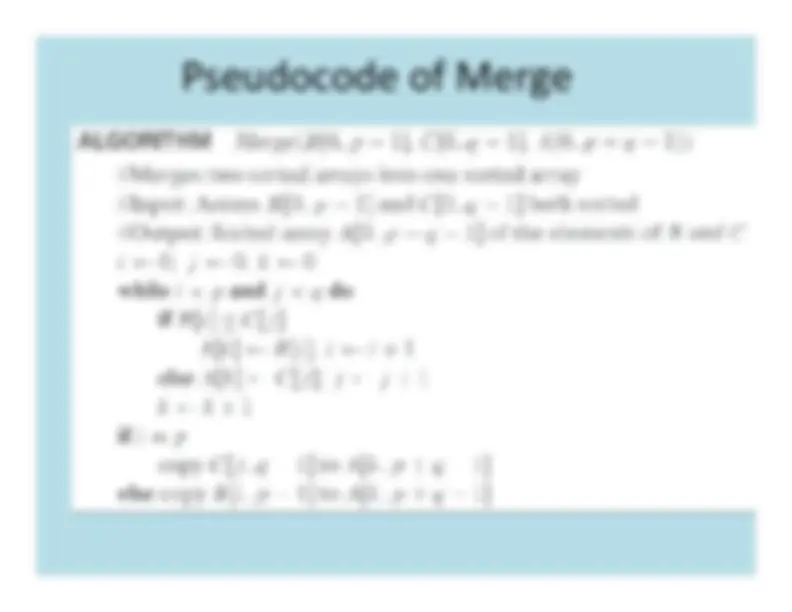
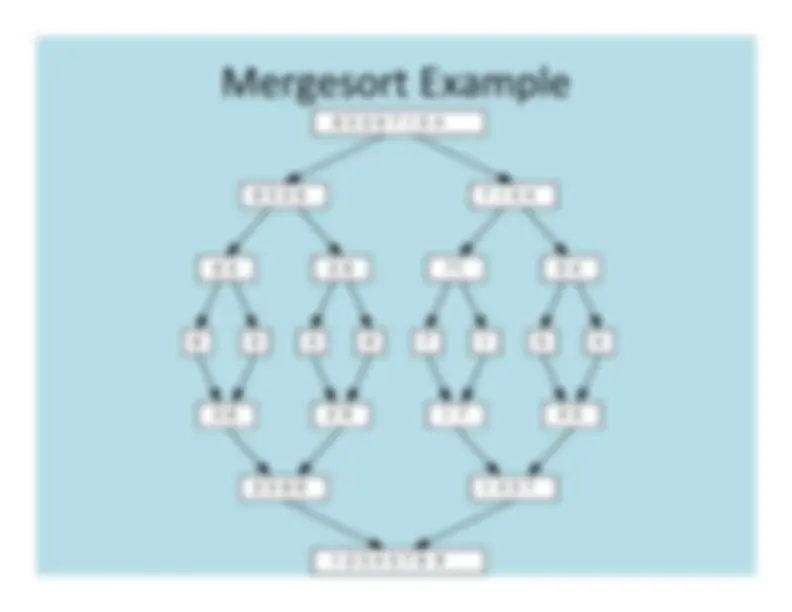
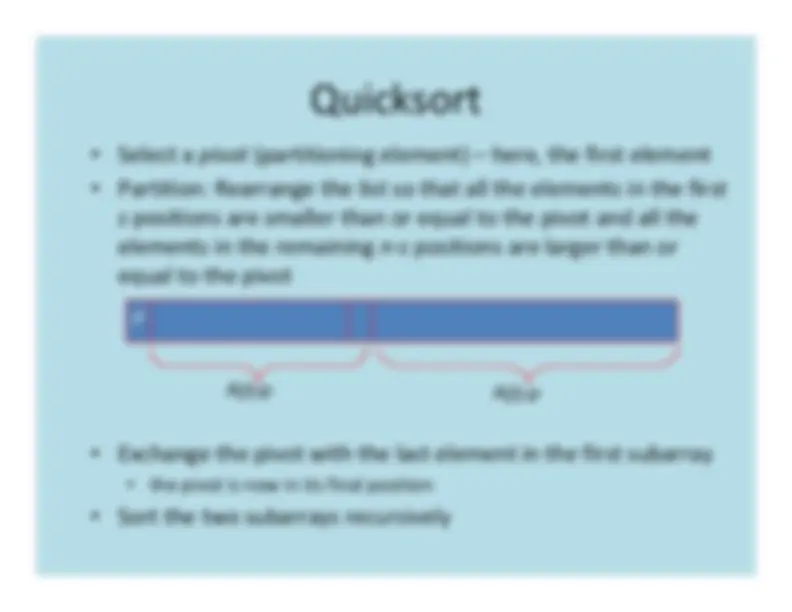
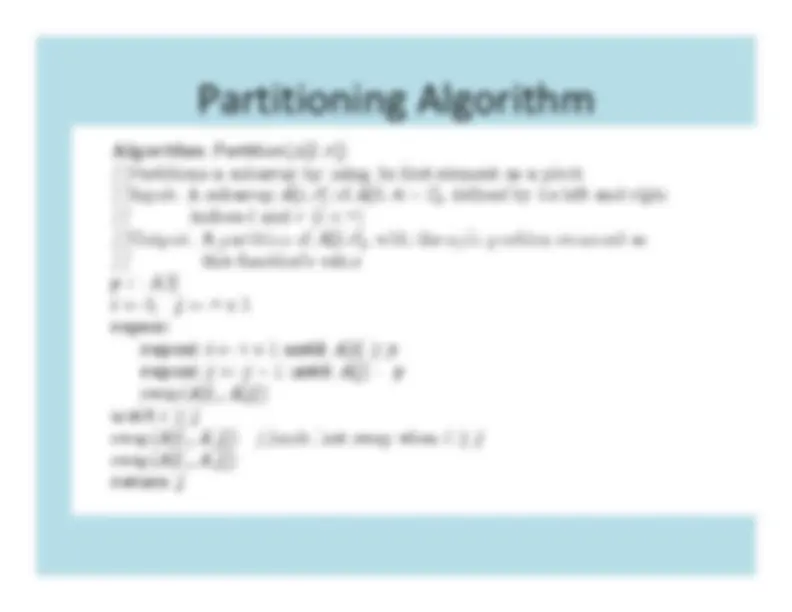
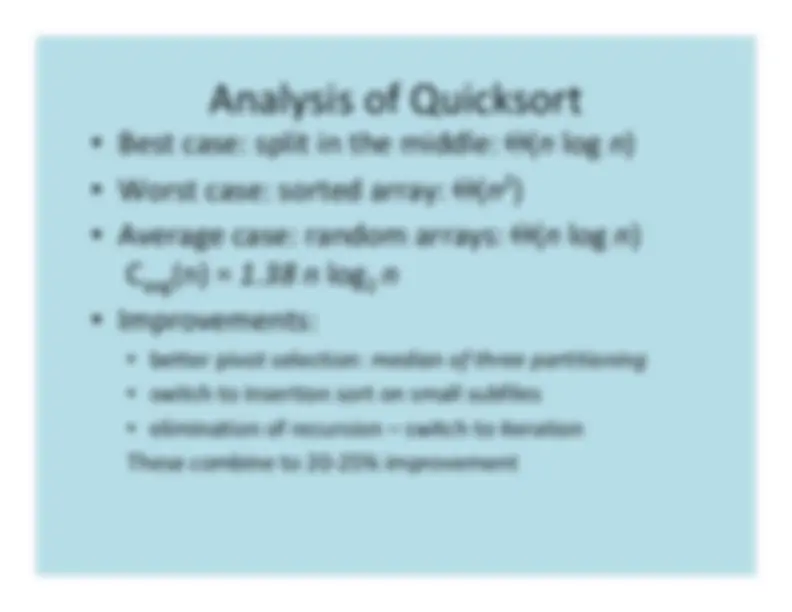
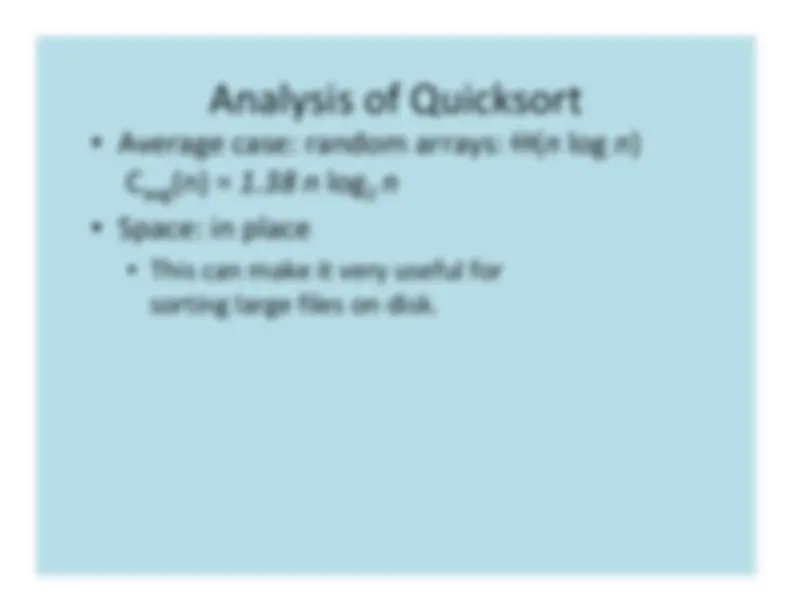
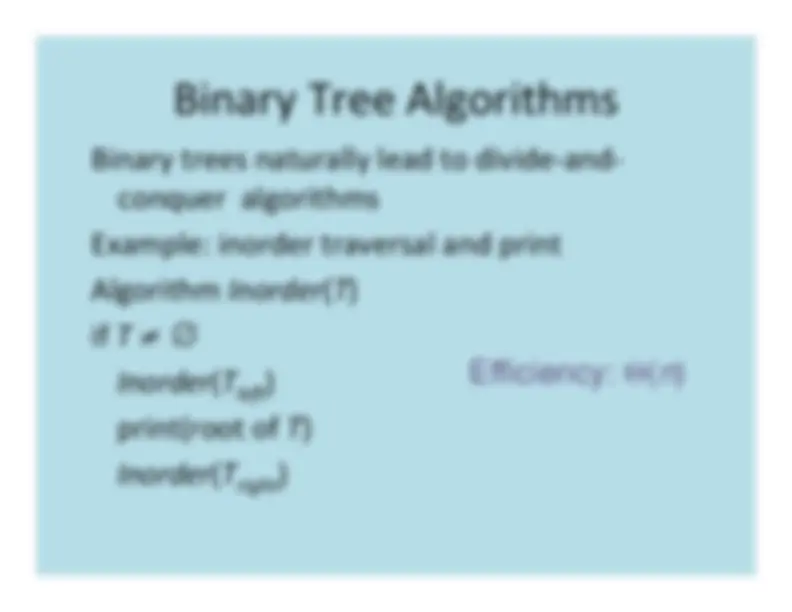
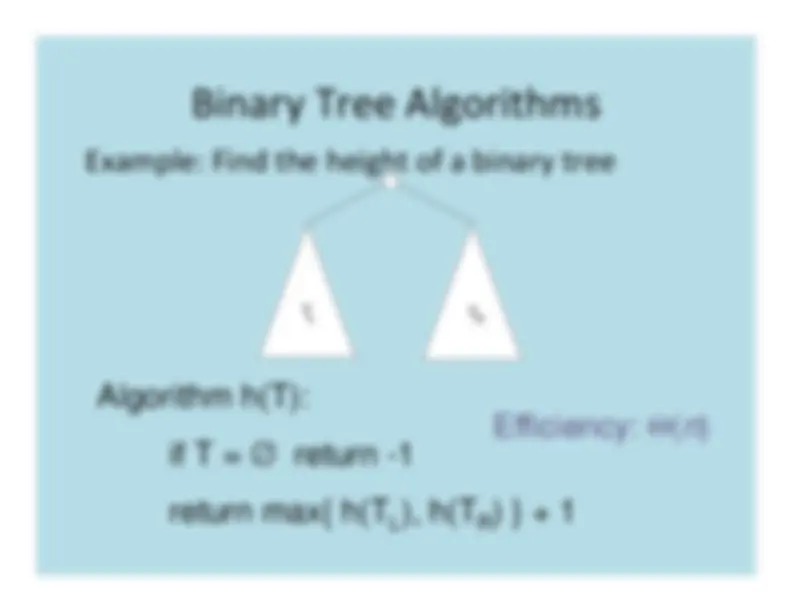
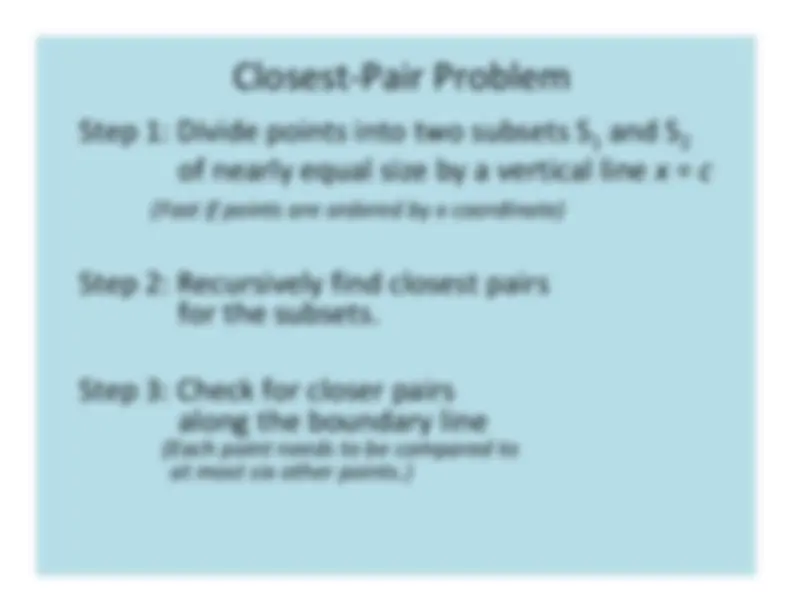
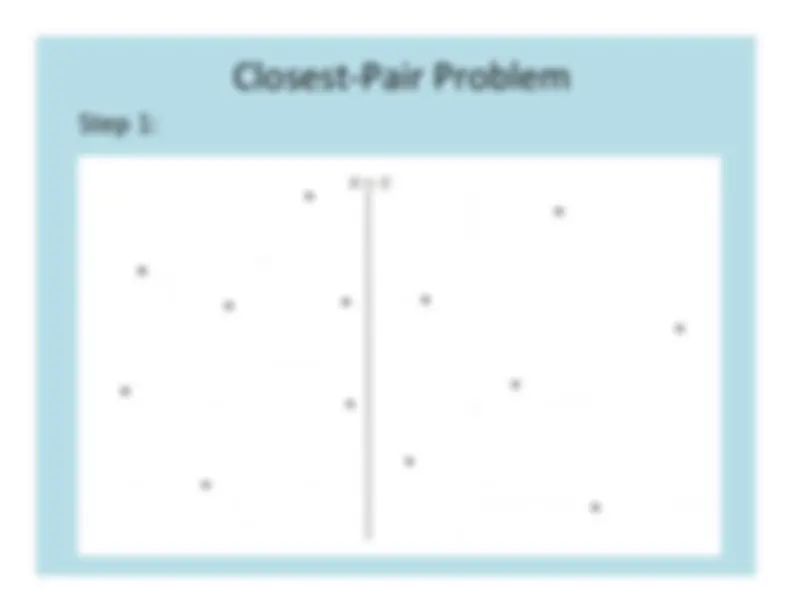
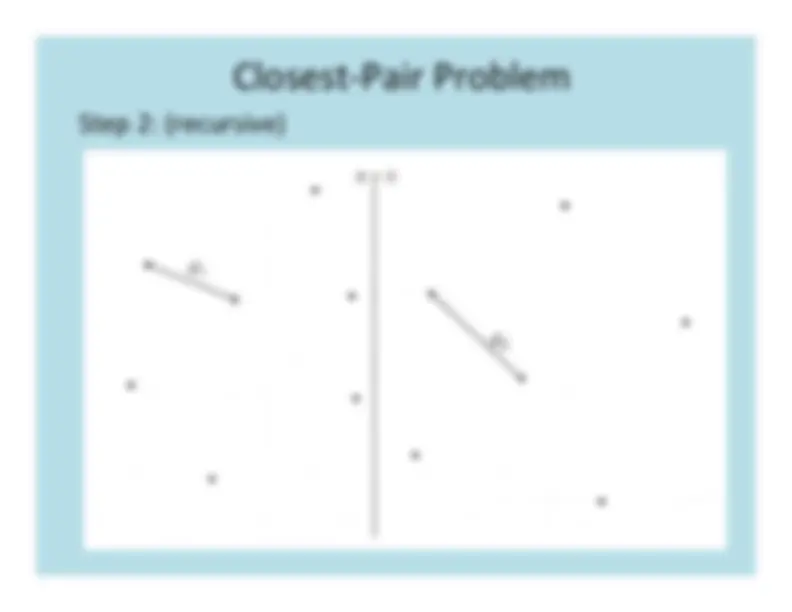
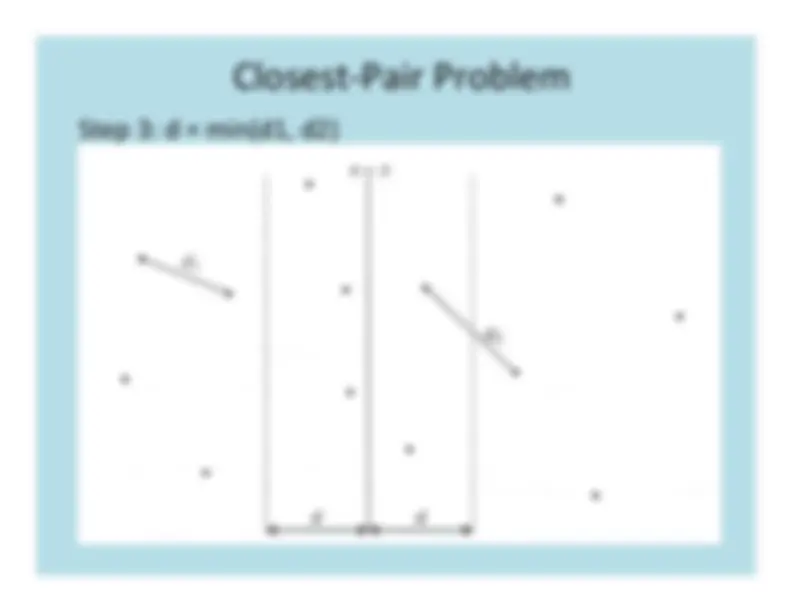
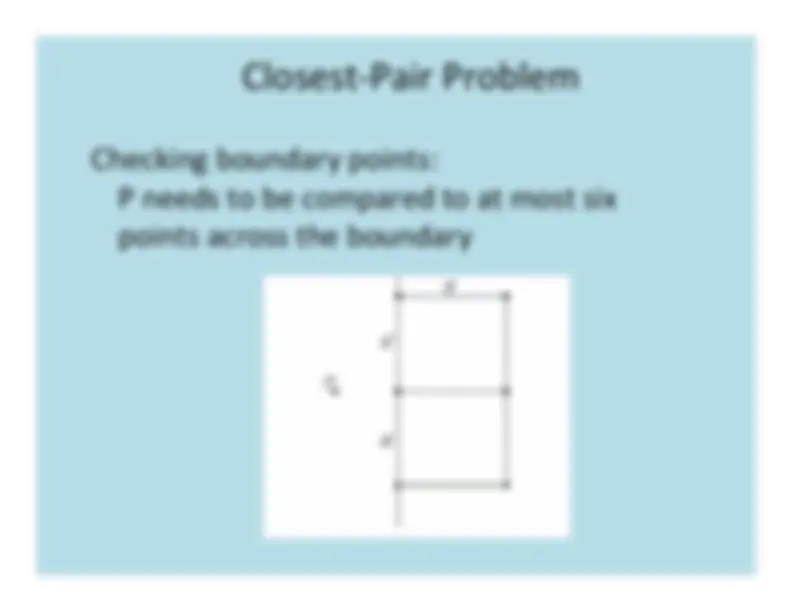
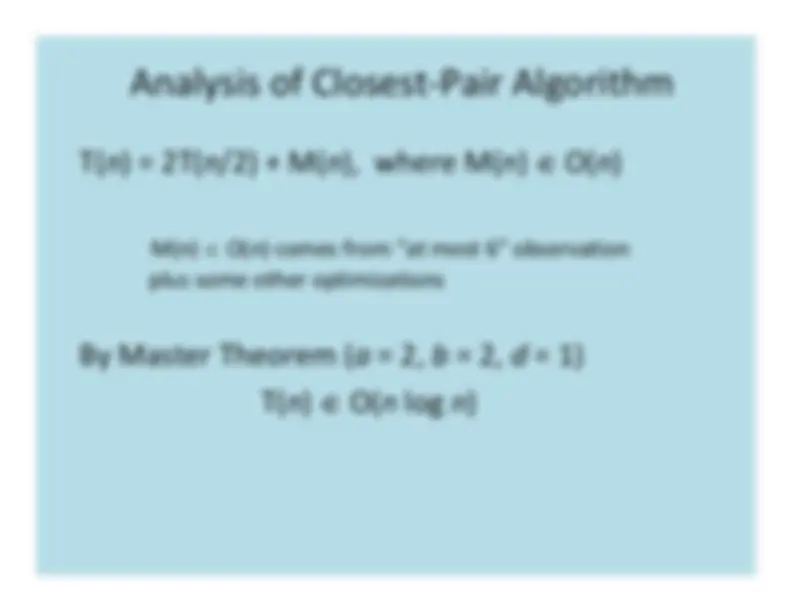
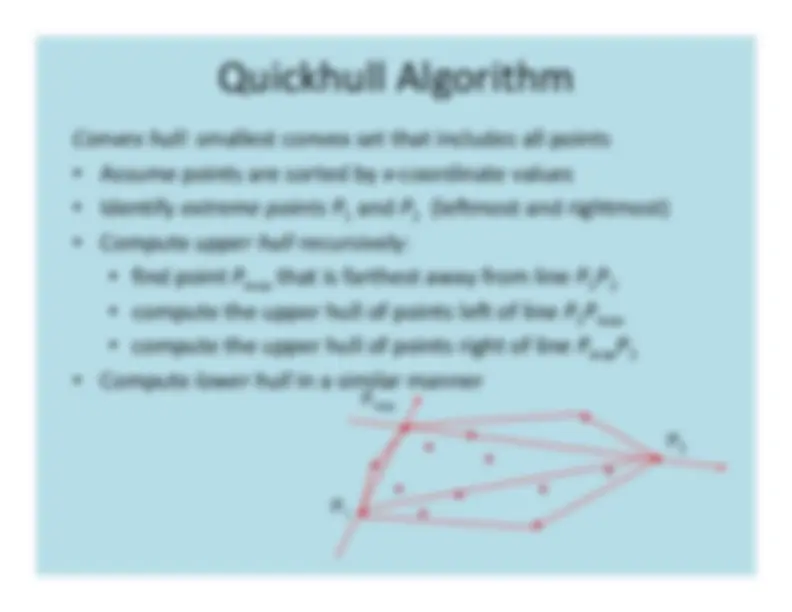
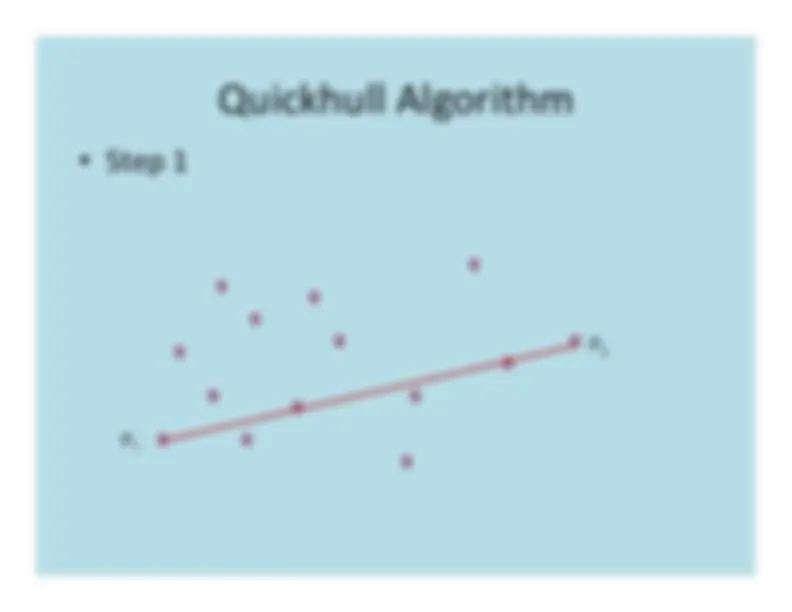
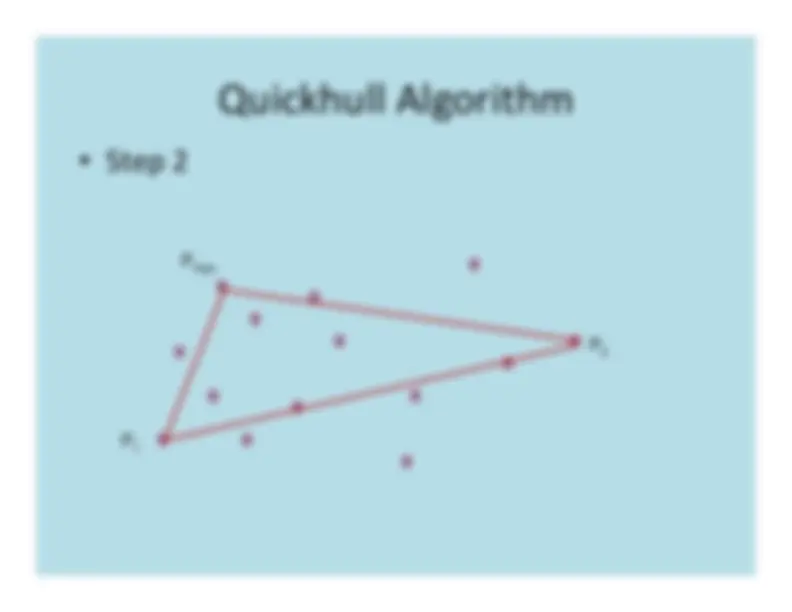
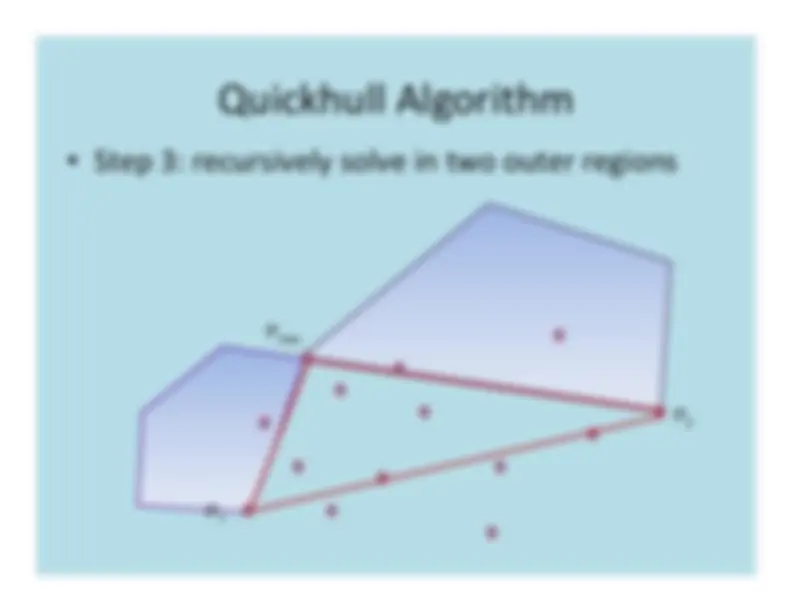
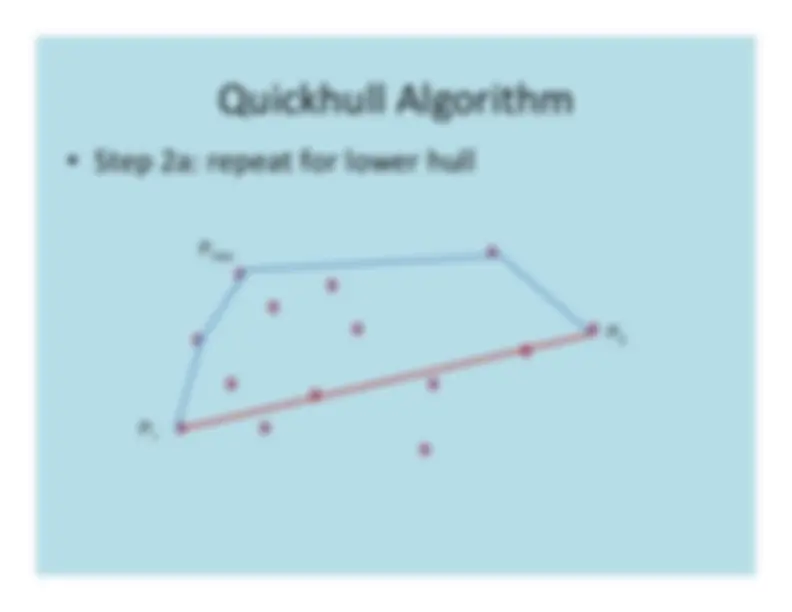
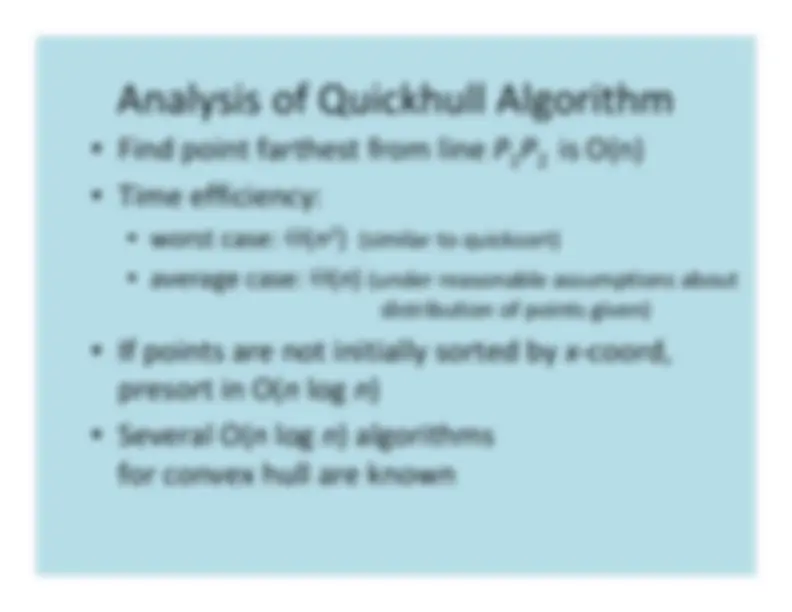


Study with the several resources on Docsity

Earn points by helping other students or get them with a premium plan


Prepare for your exams
Study with the several resources on Docsity

Earn points to download
Earn points by helping other students or get them with a premium plan
Community
Ask the community for help and clear up your study doubts
Discover the best universities in your country according to Docsity users
Free resources
Download our free guides on studying techniques, anxiety management strategies, and thesis advice from Docsity tutors
Material Type: Notes; Class: Design/Analysis of Algorithms; Subject: Computer Science; University: University of the Pacific; Term: Fall 2007;
Typology: Study notes
1 / 35

This page cannot be seen from the preview
Don't miss anything!




























Sept
The
most
‐well
known
algorithm
design
strategy:
instance
of
problem
into
two
or
more
smaller
instances
smaller
instances
recursively
solution
to
original
(larger)
instance
by
combining
these
solutions
General Divide-and-Conquer Recurrence
b = number of sub-problems
(usually 2)
a = number of sub-problems that need to be solved
(usually 2)
f(n) = cost of splitting problem +
cost of merging solutions to sub-problems
Divide-and-Conquer
Parallelization
If we can concurrently solve all the sub-problems
(through parallel processing) , then a = 1.
Master Theorem - Example
T
(
n
) = 2
T
( n
/2) +
^1
(recursive sum of array elements)
a = 2b = 2d = 0
Master Theorem: If
a > b
d
,^
T
(
n
)
∈ Θ
( n
log
b a
)
T
(
n
)
∈ Θ
( n
log
2 2
)
=
Θ
( n
)
Master Theorem - Example T
(
n
) = 4
T
(
n
/2) +
n
a = 4b = 2d = 1
Master Theorem: If
a > b
d
,^
T
(
n
)
∈ Θ
( n
log
b a
)
T
(
n
)
∈ Θ
( n
log
2 4
)
=
Θ
( n
2
)
Master Theorem - Example
T
(
n
) = 4
T
(
n
/2) +
n
3
a = 4b = 2d = 3
Master Theorem: If
a < b
d
,^
T
( n
)^
∈ Θ
(
n
d
)
T
(
n
)
∈ Θ
( n
3
)
Split
array
into
two
(nearly)
equal
halves
and
make
copies
of
each
half
in
arrays
and
Sort
arrays
and
recursively
Merge
sorted
arrays
and
back
into
array
(next
slide)
T(n)
2T(n/2)
n
a=2,
b=2,
d=
Master
Theorem: If
a
b
d
( n
( n
d
log
n
n
n
log
n
All
cases
have
same
efficiency:
n
log
n
worst
(n)
n
log
2
n
n
which
is
close
to
theoretical
minimum:
⎡
log
2
n
!⎤
≈
n
log
2
n
‐^
n
(chapter
Space
requirement:
n
(not in
place)
(correct?)
Can
be
implemented
without
recursion
(bottom
up)
Best
case:
split
in
the
middle:
n
log
n
Worst
case:
sorted
array:
n
2
Average
case:
random
arrays:
n
log
n
avg
(n)
n
log
2
n
Improvements:^ •
better
pivot
selection:
median
of
three
partitioning
-^
switch
to
insertion
sort
on
small
subfiles
-^
elimination
of
recursion
to
iteration
These
combine
to
20
‐25%
improvement